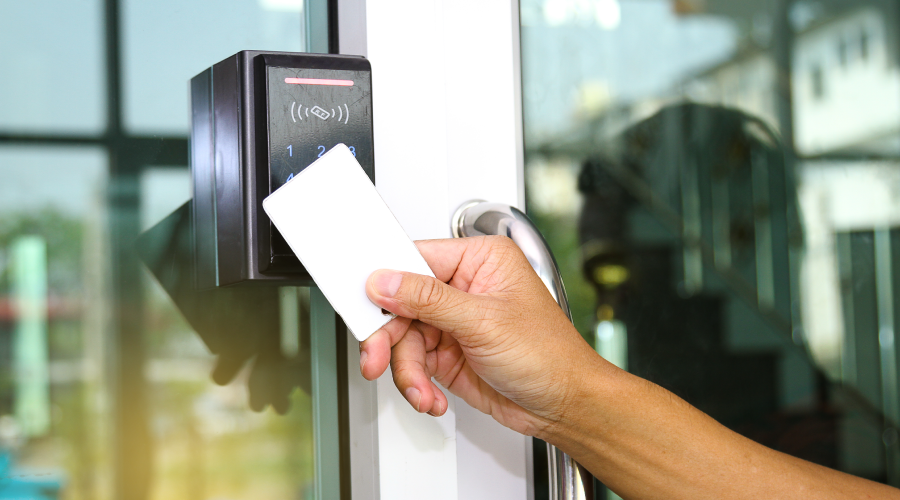Door Hardware: RFID Technology Improves Security
The biggest impact on maintenance activities from new-generation technology related to door hardware has been in the form of greater care in selecting the right hardware, as well as closer attention to preventive-maintenance tasks that keep components working properly.
One relatively recent addition to these door-hardware components is a proximity card based on active radio-frequency identification (RFID) technology. It replaces magnetic, bar code and barrier ferrite cards. RFID cards are contact-less, and one benefit is less wear and tear on both the cards and reader equipment.
The cards can provide vehicle tracking, do not require users to stop or swipe the card, and can be updated when within the range of a transmitter. They can provide both perimeter and building security on one card with dual frequencies. Their costs are declining, and security applications are expected to triple through 2012.
To ensure door hardware is the proper grade for the application, managers can refer to ANSI/BHMA standards, which provide excellent test data. Knowing the make-up of the standards, a manager can select door-hardware components that will stand up to use and abuse while providing necessary security.
For example, ANSI/BHMA's mortise locks and latches standard A156.13 cycle test requires the Grade 1 lock to pass a test of 1 million cycles. Grades 2 and 3 locks must pass a test of 800,000 cycles. The lever-impact test requires the Grade 1 lock to sustain an impact of 100 joules, or about three-quarters of a foot-pound, for 10 blows. Grade 2 locks must be able to survive an impact of 100 joules for five blows, and Grade 3 locks must be able to withstand an impact of 100 joules for two blows.
By paying attention to the standards referenced on the manufacturer's product sheets and knowing the content of the standards, managers are more likely to make an appropriate selection for long-term performance with minimal maintenance.
If an organization is serious about properly protecting a facility and its contents and occupants, a well-designed and up-to-date system of access control is well worth managers' time and effort to develop, specify, and implement.
Thomas A. Westerkamp is president of the Work Management Division of Westerkamp Group LLC, www.westerkampgroup.com.
Related Topics:














